With PageSpeed Insights and the webpage test, Google has been providing webmasters with two powerful tools to improve the performance of their websites for quite some time. At the end of 2016 Test My Site a third tool was added. Now Google is giving it an update - time to take a closer look.
With PageSpeed Insights webmasters have been able to test the performance potential of their site for some time now and discover which adjusting screws lead to an improvement in page load time. Webpagetest.org also highlights potential for improvement, but at the same time is a real measuring tool for your page load time. Webpagetest can also show you directly what effects your optimization measures have.
Test My Site is mobile only
There are good reasons not to neglect the topic of pagespeed. Because the loading speed of a site has already been confirmed as a ranking factor for Google since 2014 - even if only as a minor one, but still. The relevance is already shown by the fact that Google only extremely rarely discloses explicitly which factors influence the ranking.
So what does Test My Site do? The tool exists since the end of last year and works basically similar to PageSpeed Insights, although with an important addition: It tests not only the degree of optimization of your site , but also the page speed and usability of your site . But - and this is very important - only for mobile access to your site .
By default, the page view is simulated over a 3G connection. This is because Google expects that by 2020, around 70 percent of all mobile data worldwide will be transmitted on 3G or even slower . The results of the test are not only nicely presented, but also show - in contrast to Google PageSpeed Insights - the absolute loading time of your site . And Google also puts your page load time directly in relation to the respective industry average.
Thus, for the first time, webmasters have a tool at their disposal that exclusively provides an insight into the mobile performance of site and prepares the corresponding data in a pretty and quickly understandable way. Until now, webmasters who wanted to explicitly test the mobile performance of their sites had to dig through the mountains of data from Webpagetest.
Here's what the new version of Test My Site can do: Load speed, lost user estimation, industry benchmarks.
Compared to the first version, Google has added some datain the evaluation of the test.:
- The loading speed of site : The magic limit is three seconds - if the site takes longer to load, more than half of the visitors drop out, according to Google.
- An estimate of how many visitors you're losing because of slow load times: Google estimates that conversions can drop by up to 20 percent with each additional second of load time.
- How your site compares compared to competitors in the industry. The values of these benchmarks are calculated from Google's own data on "more than five million websites". The best 30 percent of your region are included in the concrete benchmark for your offer. This is therefore not an absolute value.
- And last but not least, there is the option to get additional information and guidance in an email on how you can improve site .
Test My Site results based on webpage test
Neither the previous nor the new version provide completely new data. In fact, the results are based on Webpagetest. In addition, the recommendations for action are the same as for PageSpeed Insights. Therefore the tip: If you know how to use Webpagetest, it makes sense to get the data directly from the original tool. This is because Webpagetest simply offers the better measurement options, especially with regard to the test settings, the test location, and much more.
Mobile is becoming increasingly important according to Google
So why a new test? Mobile is becoming more and more important in the eyes of Google. The search engine giant seems to be really promoting the topic at the moment. Not least, numerous recent case studies from Google describe how local businesses can increase their success with mobile optimization measures and campaigns. For example:
- Ask Helmut: Special experiences for the mobile generation
- Sportscheck scores with ads featuring local product availability
- Mobile Moments in the agency business
- buecher.de relies on performance optimizations on Adwords target pages
Also in the official Google Webmaster Central Blog it was announced in November 2016 that the first internal tests were underway to rank websites primarily based on their mobile version - keyword Mobile First Indexing..
Test My Site is therefore not to be seen as a revolutionary innovation, but rather as Google's initiative to further emphasize the importance of well-functioning mobile websites. Webmasters should probably be educated to pay more attention to their mobile sites .
And, of course, it's worth mentioning that Google has a perfect lead-gathering machine at its disposal via emailed test results.
Especially if you make money with your site , mobile optimization is a must
Who is mobile optimization essential for now?
The short answer: for webmasters who make money through their site , as the importance of mobile traffic continues to grow.
The long answer: actually for everyone whose users come via mobile devices. Even if you don't monetize your site directly, you probably still have an interest in ranking as well as possible. Therefore, you should at least take a look at your mobile loading speed. As I said, Mobile First is coming up - not tomorrow and probably not the day after tomorrow eitherbut you can use the time to prepare for it.
Statistics show: Mobile is on the rise
Statistics on user behavior show how relevant the topic is right now and will become in the coming years. According to the Global Digital Report 2017 by the US agency We Are Social, 82 percent of all Germans use a mobile phone - putting us in first place out of the 31 countries surveyed..
Now, mobile phones are not the same as the mobile web. According to Statista, the share of users who primarily use the Internet via a smartphone in Germany is is 30 percent, far behind the global average of around 50 percent.
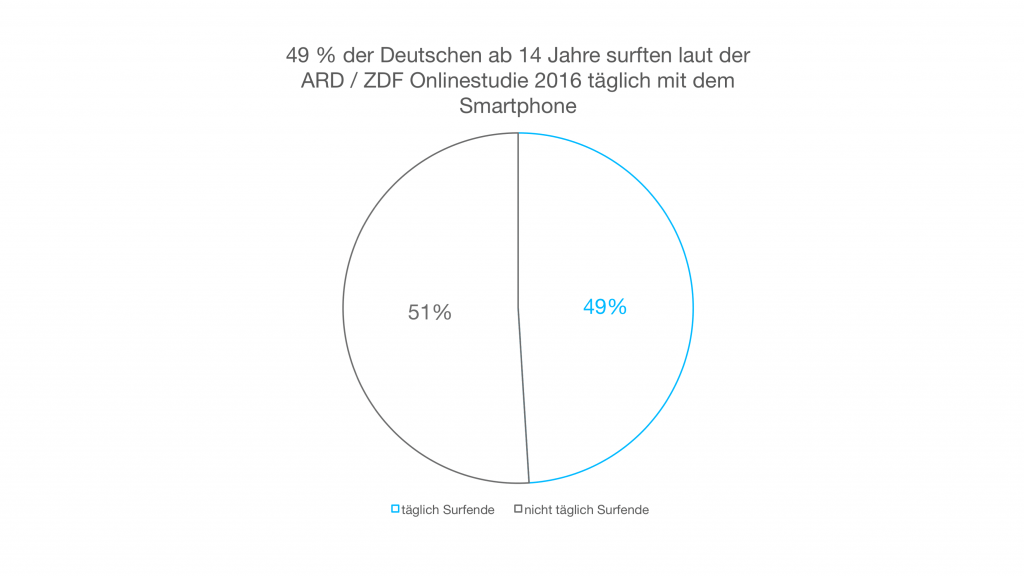
That doesn't look like much at first: The majority of Germans do not yet use their mobile phones primarily for surfing. The emphasis here is on "primarily". Of course, other devices are also used, but that does not mean that optimization for smartphones can be neglected. Even today, the average time spent on the Internet via mobile devices in Germany is around 87 minutes.and just under 50 percent of Germans over the age of 14 surfed daily with a smartphone, according to the ARD/ZDF Online Study 2016.. If one also includes those who at least rarely use the smartphone to go online, it even overtakes the laptop as the most common Internet device..
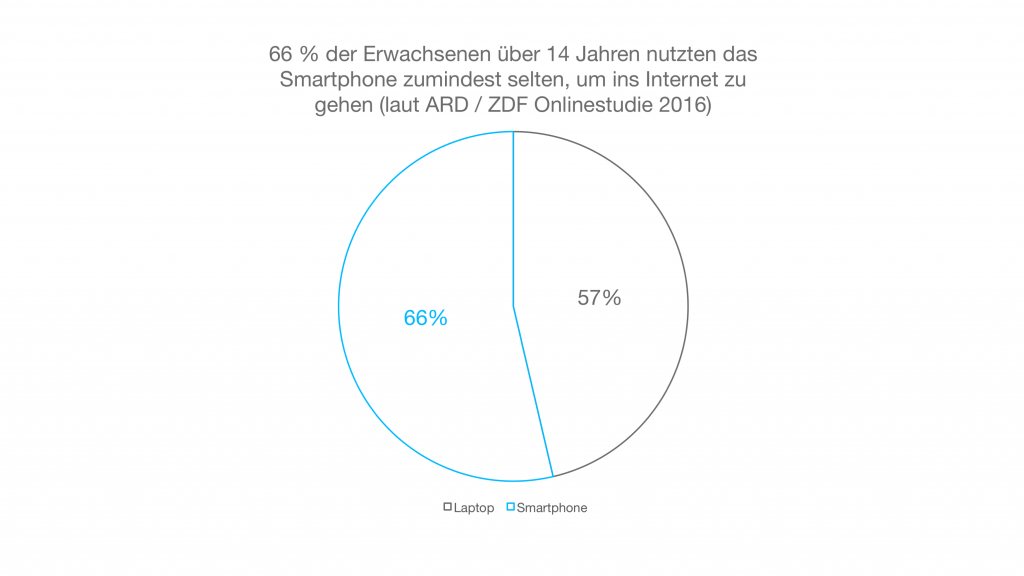
And you can assume that the number of users who increasingly use mobile surfing will increase even more in the future: Because sooner or later, all mobile phone users will probably be smartphone users at the same time.
Mobile optimization: Relevance strongly depends on the behavior of your visitors
So does this mean that you too should spruce up the mobile version of your website?
Yes, mobile optimization is to be taken seriously, because it can open up sales potential. But how relevant the topic is for you directly, can be seen for example in Google Analytics. Here you can see what percentage of your visitors already comes via mobile devices.
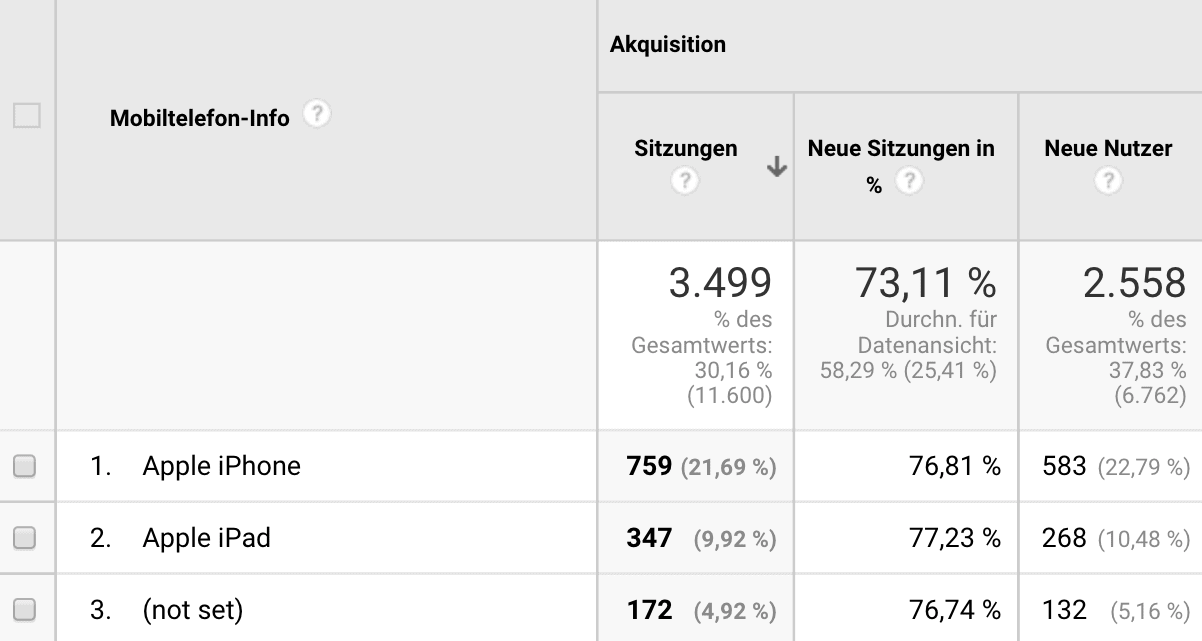
You should check this to assess the importance of mobile optimization for your website. The more users come via mobile devices, the better your mobile site should run to ensure the best possible user experience. However, if hardly any users come to you via a mobile device, the optimization here tends to be prioritized even lower.
Test My Site - Step by Step
But back to the Google tool. Let's take a look at the example of raidboxes.io and see what Test My Site has to offer.

The handling of Test My Site is very simple: On the start page you enter the URL you want to test (probably your own) and the tool starts testing.
Now Test My Site analyzes the data of your website: the HTML and CSS files are checked as well as the JavaScript files and the compression.
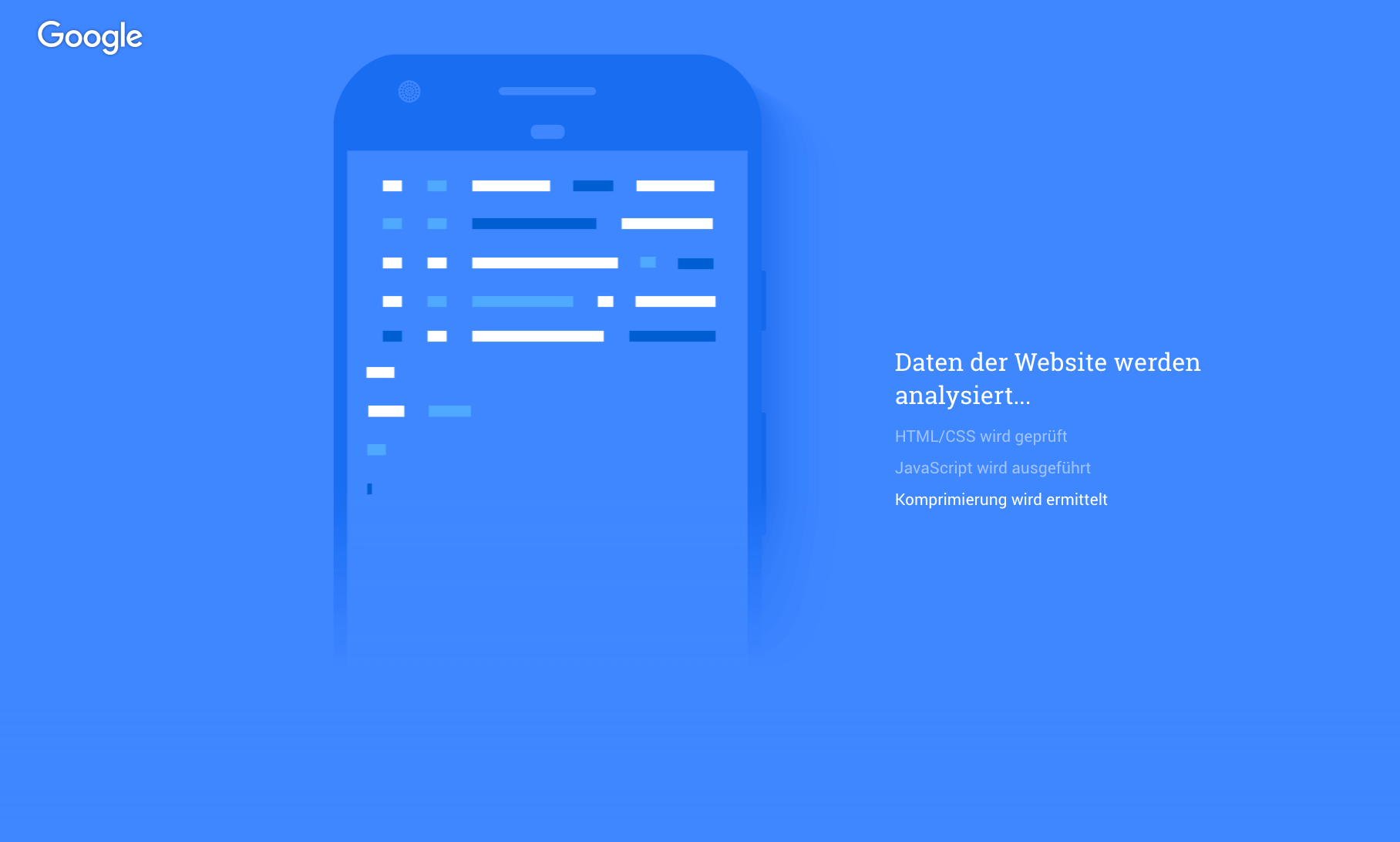
A minute later, the results are ready: You find out how fast your site loads on mobile and what visitor loss you have to fear due to the loading time.
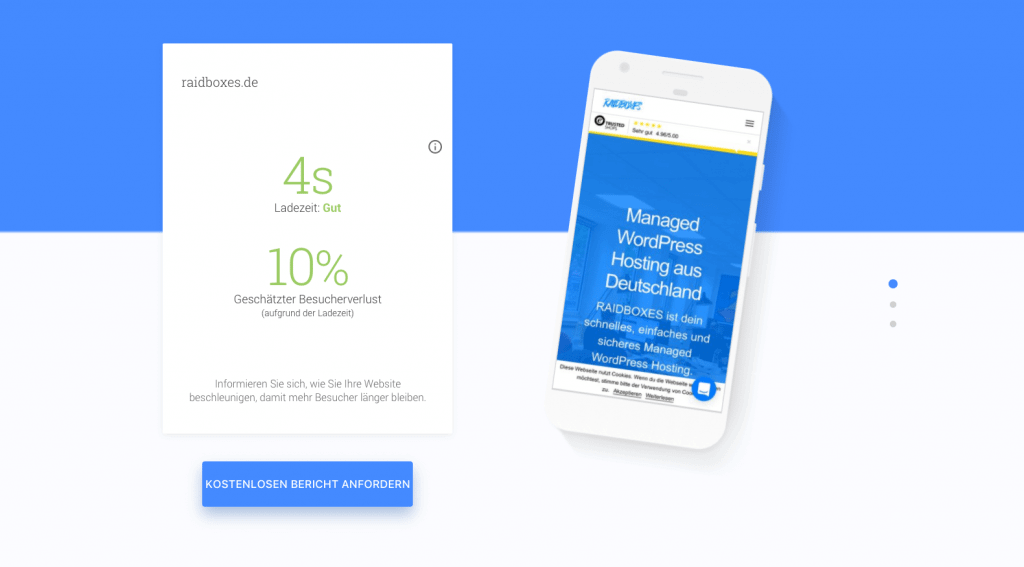
In the second section of the results overview, you will find the industry comparison. Especially if you are active in an industry whose customers are rather tech-savvy, you can secure yourself an advantage over the competition with a particularly fast mobile site . By the way, you also have the option here to compare your loading speed with the average of another industry.
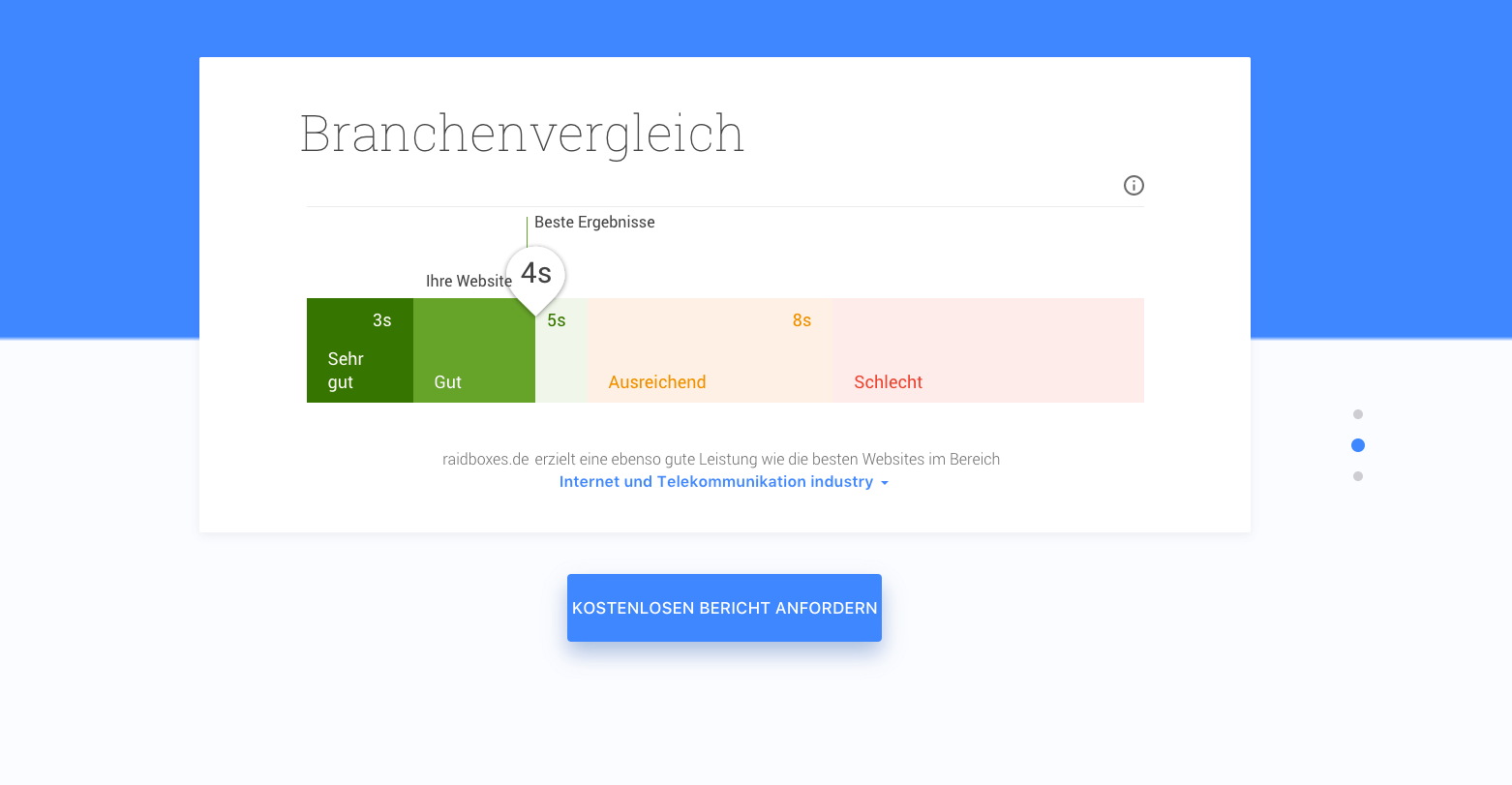
And last but not least, Google lets you know how much optimization potential there is for your site . In our case, that's about three seconds. This means that our loading speed would only be one second - sounds tempting.
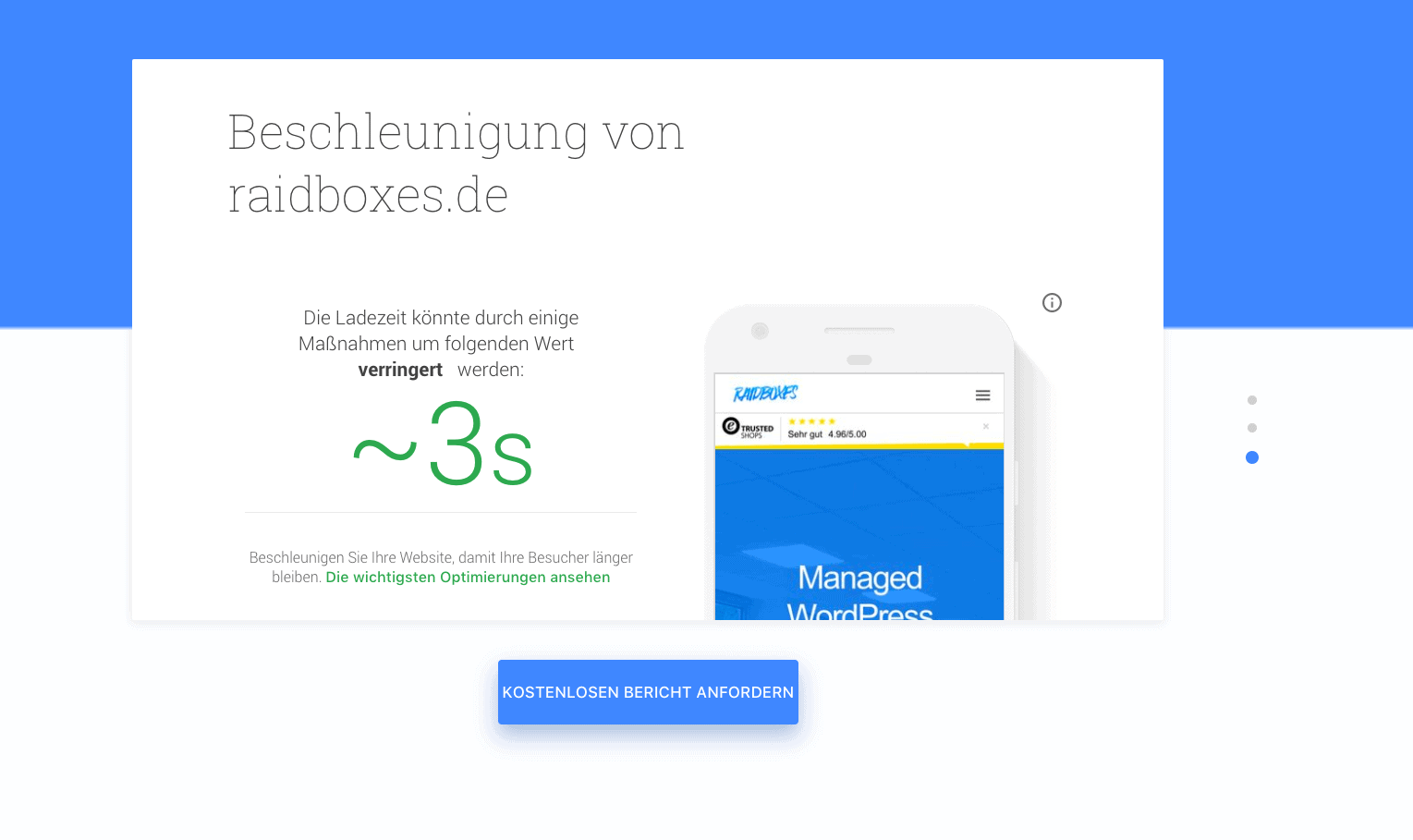
So how could we manage to reduce our loading speed by about three seconds? With one click, additional information about the optimization potential can be viewed. However, these turn out to be quite scarce for the time being.
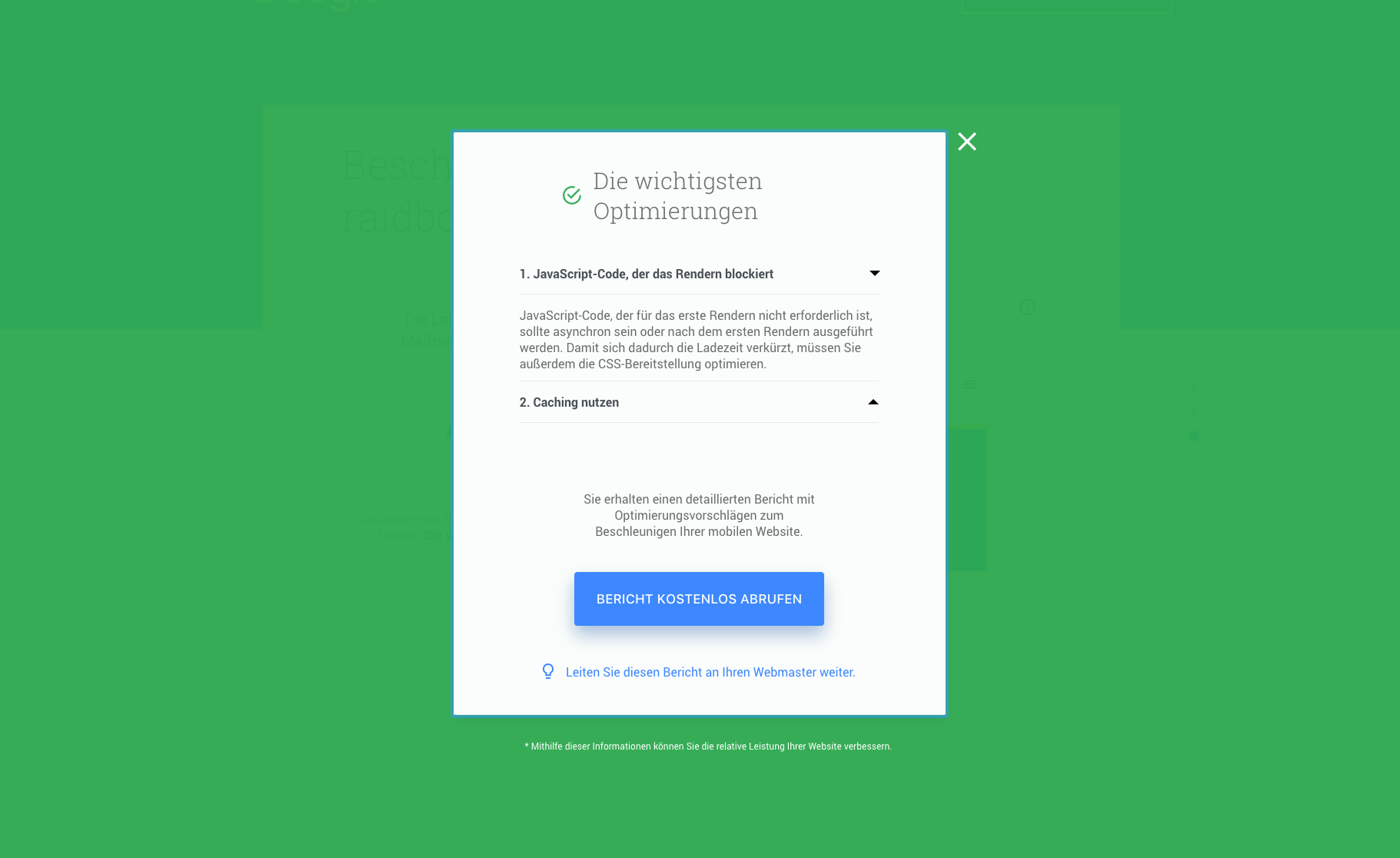
The downer: the mail barrier
I already mentioned it: Google has built up a tool for lead generation with Test My Site. Because you can also have all the information from the test sent to you by mail. Then you get a nice overview with further links.
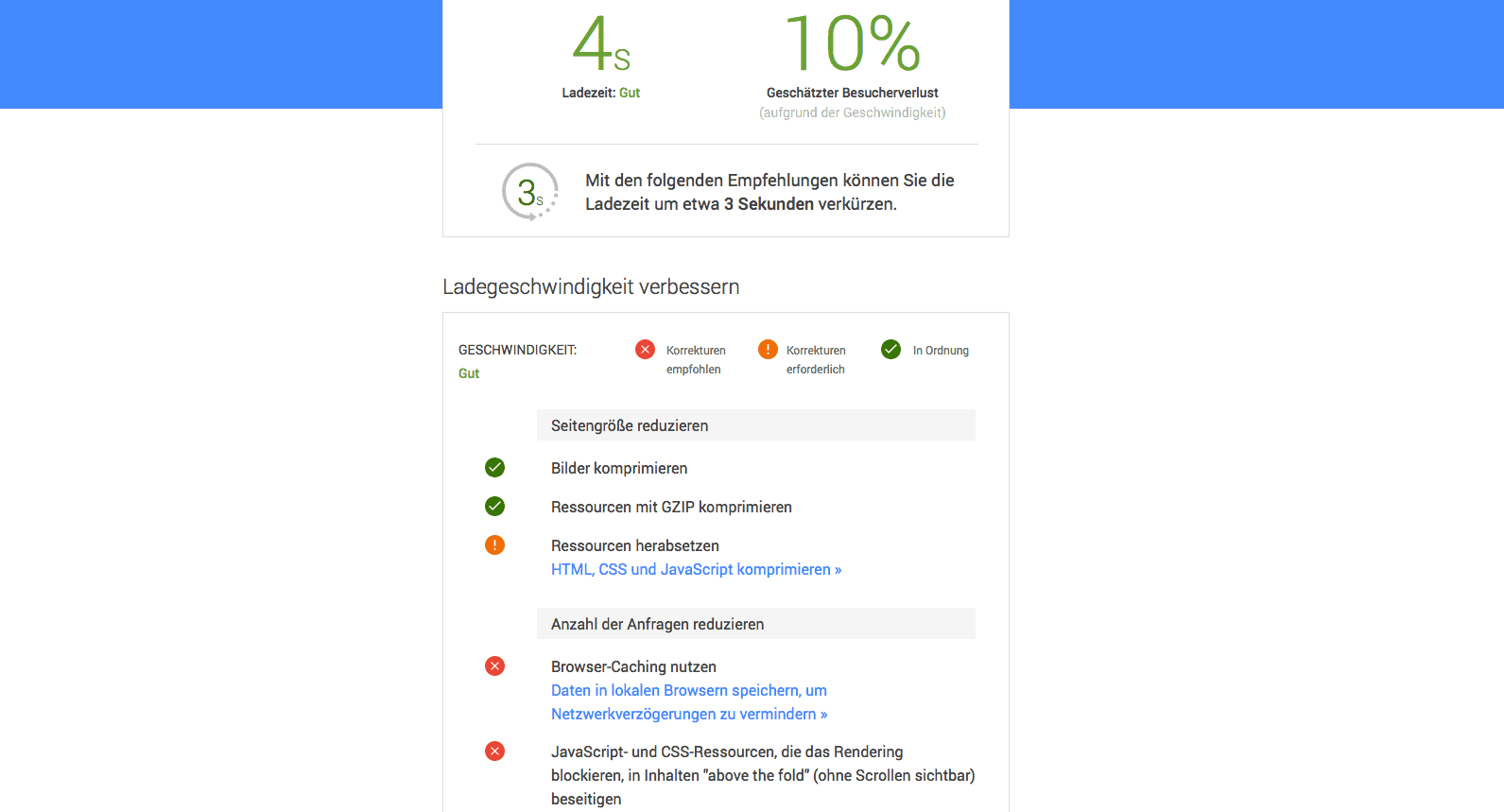
The recommendations for action are structured thematically and prioritized using a traffic light system. The links in the mail lead to the developer section of the PageSpeed Insights tool, which explains, for example, how to properly compress CSS and JavaScript resources. In order to implement the advice, however, technical understanding is required. For webmasters who are not concerned with what happens behind the scenes, these sites offer little concrete help. In this case, some training and further education is necessary.
Google Test My Site inherits Google's weaknesses PageSpeed Insights
It must also be said at this point that Google PageSpeed Insights does not always make sensible suggestions for improvement. The best example is browser caching: PageSpeed Insights actually advises better use of caching in almost every test we have conducted in the past. But you have to know that the non-cached resources Google mentions are external resources that can't be cached at all. And of course you have to think about it when optimizing your pages. Otherwise, you get caught up in shadow boxing matches with pseudo errors instead of tackling the important optimization measures. Google Test My Site has definitely inherited this weakness from Google PageSpeed Insights .
Conclusion: Google Test My Site is old wine in new bottles
The bottom line is that Test My Site offers little advantage over the older Google tools. The data is identical to that provided by Webpagetest and PageSpeed Insights . The suggestions for action also come from PageSpeed Insights and bring their weaknesses and pitfalls. Only those who know these can anticipate them in a meaningful way during optimization. All others have to delve deeper into the matter first. Test My Site does not make mobile optimization any easier.
Nevertheless, Test My Site is not a tool for the bin. The design is top, the handling is fun. And that is probably the biggest advantage of the test. With its all-around good usability and the clearly presented results, it encourages site owners to deal with the issue of mobile loading speed in the first place. And mobile will become increasingly important in the coming years. Even if less tech-savvy webmasters can't implement Test My Site's advice directly: They are a first impulse for which knowledge gaps need to be closed in order not to miss the boat.
However, a really good and in-depth analysis of your site can only be achieved with other tools. Personally, we are big fans of Webpagetest. The tool also needs some training, but offers excellent setting options and provides data en masse.
